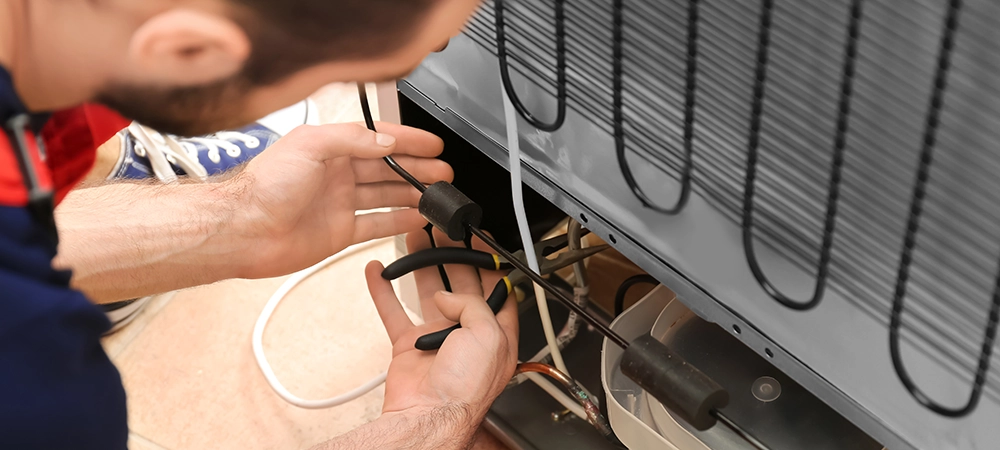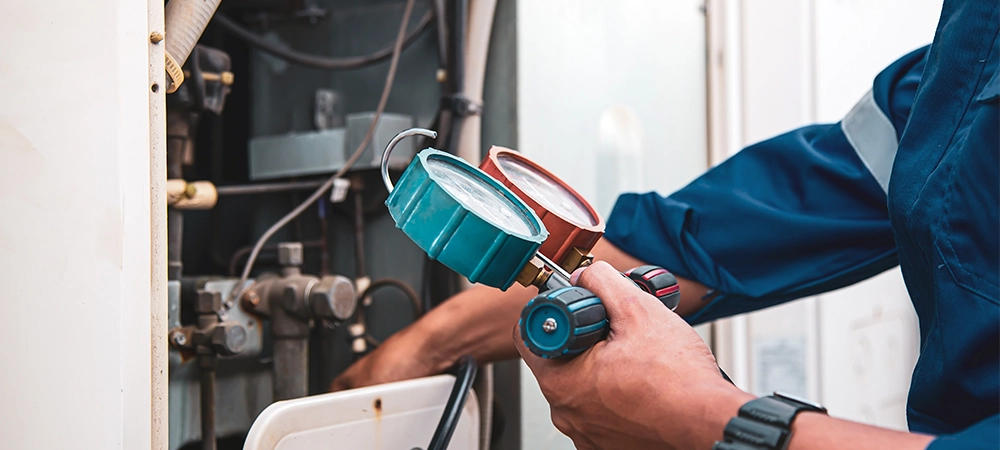Refrigerators play an integral part in our daily lives by maintaining food freshness and quality, but occasionally we may come across an annoying problem — condensation buildup.
Condensation buildup inside your fridge can lead to moisture-related issues, including water puddles or foodstuff spoilage.
In this blog post, we’ll examine why fridge condensation occurs. This information will help you troubleshoot refrigerator condensation and provide easy fixes where necessary.
Perhaps more importantly, we’ll discuss effective ways to prevent refrigerator condensation and ensure your appliance’s optimal performance.
Understanding Refrigerator Condensation
Condensation occurs when warm and humid air comes into contact with cold surfaces such as refrigerator walls or shelves. When this occurs inside an uncooled fridge, moisture in the air condenses onto its surfaces, such as shelves, walls or containers, producing condensation.
This condensation can build up to an excessive level, leading to water drips, mould growth or an unpleasant odour. Although some condensation buildup is normal and should be expected over time, excessive levels may result in issues like leaky pipes, mould growth or an unpleasant odour if not managed appropriately.
Related Article: How to Easily Fix a Broken Refrigerator
Refrigerator Condensation: Causes and Solutions
Here’s why your refrigerator is displaying condensation issues.
Temperature Setting Issues
One of the primary sources of condensation in refrigerators is improper temperature settings. If set too cold, interior and exterior temperatures diverge further, increasing condensation formation. Conversely, setting too high can result in inadequate cooling and increased moisture buildup.
Faulty Door Seals
Faulty door seals (also called gaskets) can create gaps or leaks in a refrigerator’s insulation, allowing warm, humid air from outside the fridge to seep inside, leading to condensation build-up. Our refrigerator repair technicians recommend checking door seals for signs of wear, like cracks or tears, before replacing them if necessary.
Overloading Your Refrigerator
Overpacking the fridge restricts airflow and stops cold air from circulating freely, which may result in cold spots or condensation build-up in certain spots. To ensure optimal cold air circulation, be sure to leave enough space between items so they can flow properly through.
Defective or Blocked Drainage System
Refrigerators come equipped with drainage systems designed to remove excess moisture from the inside. However, if this drain system becomes blocked or the defrost mechanism malfunctions, condensation problems could develop.
In such an instance, it’s wise to regularly inspect both the drain pan and tube for blockages and clean as necessary. If your fridge’s drainage system is damaged or malfunctioning, it would be wise to seek assistance from a professional appliance repair service provider.
External Factors
External factors can increase the chance of condensation forming on its walls. For instance, high humidity levels or placing your refrigerator near a heat source such as an oven or direct sunlight can contribute to condensation issues.
Instead, it’s best to house your refrigerator in an area with good air ventilation away from direct sunlight and other potential heat sources to help prevent this problem.
Solutions to Prevent Refrigerator Condensation
You can avoid spending hundreds of dollars on refrigerator repair with the following preventive steps:
Set the Temperature Properly
Referring to manufacturer recommendations for optimal temperature settings and making necessary adjustments is key to avoiding refrigerator condensation.
Aim for temperatures between 37-40degF (2-4degC) in the fridge compartment and 0-5degF (18-15degC) in the freezer compartment. This temperature range typically produces optimal results — setting temperatures too low may lead to excessive condensation.
Regularly Inspect and Replace Door Seals
Check door seals regularly for signs of damage, such as cracks or tears, then clean them with mild soapy water until free of food debris. If seals become compromised, consider replacing them to maintain proper seals and reduce warm air infiltration.
Avoid Overpacking Your Refrigerator
Ensure proper airflow by not overloading your refrigerator with food items. Leave ample space between items so cold air can circulate freely.
Another tip is to organize your refrigerator efficiently. Efficient organization makes finding what you need easier and limits the chances of leaving the door open for too long.
Regular Cleaning of the Interior
Use a mixture of water and mild detergent to wipe down your refrigerator’s interior surfaces thoroughly. Specifically, you want to pay attention to surfaces most likely to become moisture-filled, such as back wall corners and door edges.
This helps remove existing moisture while preventing mould or bacteria growth from taking hold in these vulnerable spots. Pay special attention when wiping these areas, which could become condensation-prone, such as back wall corners.
Check Your Drainage System
Inspect and clean any blockages in the drainage system (drain pan and tube). If damaged or malfunctioning parts need repair services to be fixed.
Avoid Opening the Door Frequenting
Reduce door opening frequency and duration as this allows warm air to enter your refrigerator, which exposes its contents to unnecessary exposure to the outside air. Plan retrievals in advance so as to limit unnecessary exposure.
And finally, refrain from leaving your refrigerator door open for extended periods when unloading groceries or making meals.
Moisture Absorbers
Use moisture absorbers such as baking soda, charcoal, or desiccant packs in the fridge to effectively absorb excess moisture and prevent condensation. Make sure that these moisture absorbers are regularly replaced as per manufacturer instructions.
Related Article: The Comprehensive Refrigerator Troubleshooting Guide You Need
Final Thoughts
Refrigerator condensation can be an annoying hassle, but with proper maintenance and preventive measures in place, you can effectively manage this problem.
Setting the appropriate temperature, inspecting door seals, and providing adequate ventilation are all key hacks to troubleshooting and fixing refrigerator condensation. And where you need professional help, our refrigerator repair technicians at Prime Appliance Repair can be there the same day you call us.
Contact us today at 647-490-6155.










